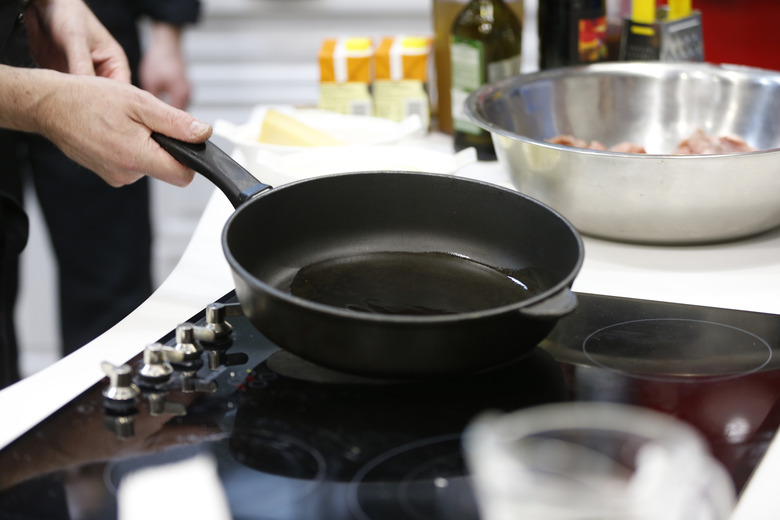How To Clean Vegetable Oil Spills
Cleaning up any spills in the home is a mess no one particularly wants to deal with. But some spills — water or milk — are easier to clean than others. If you've spilled vegetable oil in your kitchen, you already know how tough it can be to clean up if you go about it the same way you would any liquid. Because oil tends to leave a sticky, slick residue behind, removing an oil spill should involve absorbing, blotting and cleaning with soap and water.
Oil Spills in the Kitchen
Oil Spills in the Kitchen
If you've spilled vegetable oil onto your floor or another surface inside of your home, chances are that it happened in the kitchen. Most people are tempted to use a rag to clean oil off floor surfaces in the same way that they would to clean up spilled water or red sauce, but doing this will only cause the oil to spread and cover more area. This could result in stickiness or even a slippery and unsafe floor, depending on where the oil has spilled.
Instead, you'll need to use something that will absorb the oil. You sprinkle a granular powder over the oil, for example, or use absorbing sheets designed to soak up oil spots without spreading it. If you must wipe up an oil spill, take special care to blot the oil with a towel rather than wipe it in a circular or back-and-forth motion.
Granular powders for absorbing, which can be store-bought or found online, use clay particles to soak up spilled oil. Alternatively, you can use a couple of basic ingredients that you may already have in your kitchen, which can be equally effective when you need to remove oil from floor tiles. Cornstarch is an absorbent, fine powder that can be used to clean up spilled cooking grease or vegetable oil. Oatmeal, cat litter, sawdust and wood shavings are other good options.
Remove Oil from Floor Tiles
Remove Oil from Floor Tiles
Once you have absorbed the spilled oil from your floor or countertop, you'll need to clean up the oil stain to prevent stickiness or a slippery surface. If you've spilled oil on a linoleum floor, you can use dish soap, baking soda, warm water and a scrubbing brush to lift the oil stain from the affected area. Vinyl flooring should be wiped down with warm water before being treated with vinyl floor cleaner, which can be purchased at most grocery, hardware or drug stores. To remove oil from floor tiles that are ceramic, mix white vinegar and hot water in a bucket, then use a rag or chamois mop to gently buff the surface.
Cleaning Oil From Carpeting
Cleaning Oil From Carpeting
If you've spilled vegetable or other cooking oil on your carpet, you can get your flooring back to normal by using dishwashing soap, which is formulated to cut grease. To do this, start by blotting your oil with a clean towel until the towel no longer picks up any oil. Then, blot the area with rubbing alcohol and a clean rag, taking care to avoid rubbing the stain into the carpet. Once your carpet is treated with alcohol, mix 1 quart of water with a 1/4 teaspoon of dishwashing soap, pour it onto the stain and blot with a towel until the entire oil stain has been lifted.
